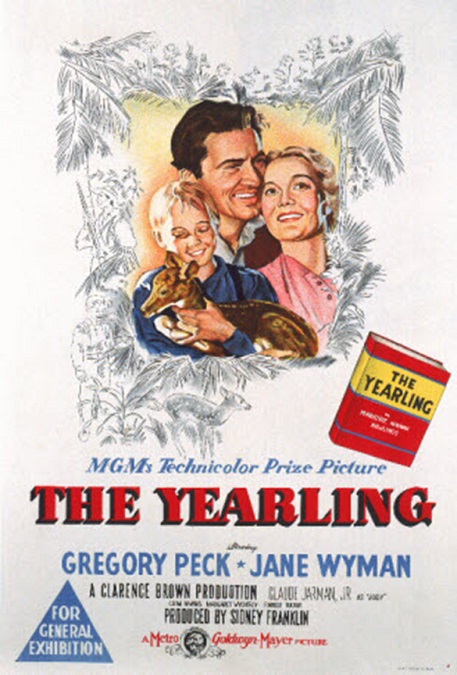

The Yearling – 1946

Now, here, finally, we have a film that was completely deserving of the Best Picture nomination that it received. I’d even go so far as to say that it deserved to win the coveted prize. The Yearling was perfectly cast, expertly acted, and wonderfully directed. The sets and costumes were spot on. The plot was dramatic but not melodramatic. It worked on multiple levels and had a deep and insightful way of examining a child’s growth from boyhood to manhood. It was a powerful story that pulled at the heartstrings without being preachy or blunt. So why didn’t it win? Simple. It was up against The Best Years of Our Lives. There’s no shame in losing to that one.
As the film began, I was put on guard. Claude Jarman Jr. played the lead, a ten or eleven year old boy, named Jody. Good child actors are hard to come by, but Jarman really did his job well. The story took place near Lake Georgia, Florida in 1878. He is the only living child of his parents, Ezra and Ora Baxter, played by Gregory Peck and Jane Wyman. They are farmers and hunters in a time when the life of a pioneer was hard and dangerous.
The film spends a fair amount of time in set-up for the real dramatic things that take place in the second half of the movie. First, we learn that Jody had six siblings who had all died, making Jody’s mother emotionally distant. Second, we have a loving father who is going out of his way to give his son as much of a childhood as possible. The result is a boy who knows nothing about responsibility, hardship, hunger, or loss because neither parent is teaching him about such things.
It isn’t until the second half of the film that the faun is introduced. Jody takes the baby deer into his heart as only a child can, not fully realizing the ramifications of having such an unusual pet. The bond the boy develops with the faun, who he names Flag, is both powerful and believable because of Jody’s age. Again, Jarman was incredible in his portrayal. The scenes of him running through the forests with the wild deer were incredibly well done.
The problem is that the faun grows quickly and is, in all reality, a wild animal. He continually eats the family’s crops, endangering their very survival. When Ezra gets sick and cannot farm the land, Jody does a lot of growing up. He, alone, takes on the responsibility of planting and tending the crops, all the while trying to defend them from Flag.
The coming-of-age theme is a common one in films, and if done right, can be a powerful one. It is something with which nearly every human being can identify. It was a time in America’s history where being responsible was a requirement for survival. People had to start being responsible at a very young age.
Jarman’s character, Jody, was certainly the focus of the plot, and he really turned a wonderful performance, but I would be quite remiss if I didn’t go into Peck and Wyman’s performances, as well. I think Peck really outdid himself here. He took on an accent, and kept it up believably. He also really looked the part of a pioneer farmer. But what captured me was the wonderful portrayal of the strong, yet gentle archetype. He was mild mannered, but knew when to stand up for his principles. The love for his only surviving child was so clear to see that I have to give Peck a lot of respect for his fantastic performance. Apparently, the academy thought so, too, because he was nominated for Best Actor that year, losing to Fredrick March in The Best Years of Our Lives. Never-mind the fact that I would consider his to be a supporting role.
Wyman’s performance was also truly inspired, as a woman who had endured incredible loss. She was often sour, but never mean or spiteful. But every now and then, her softer side would emerge, and her love for her son became something special to watch. Wyman was incredible. The ending scene, where Ora, who has spent three days searching for her own yearling son, discovers that Jody has found his own way home, is the real emotional pay-off of the film. It was a satisfying emotional release that had been building, really, since the beginning of the film. Well done Wyman!
The cinematography was also something that needs to be mentioned. The film was shot in color, bringing out the beauty of the Florida wilderness. Before I was aware of where the story took place, I was bothered by the fact that there were palm trees all over the place, marking the landscape with their distinctive shapes. The scenes that took place out in the forests were incredibly well shot and almost magical in their realism. The flood sequence was spectacular to see on the screen.
The film was directed by Clarence Brown, who was nominated for Best Director, only to lose to, you guessed it, William Wyler for The Best Years of Our Lives. Sure, the other film seemed to take all the big prizes, but it could have just as easily been The Yearling. It must have been an incredibly close competition.
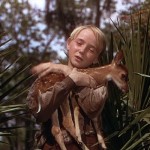
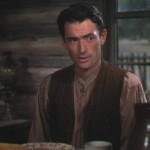
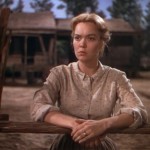
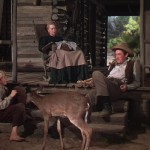
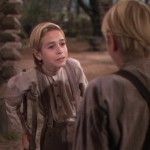
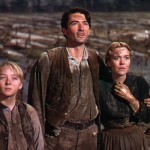
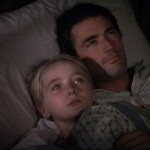
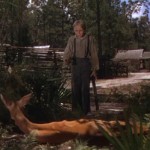
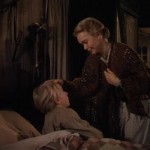
As a child I saw The Yearling on TV in the ’50s. I was devastated by shooting of the deer. I don’t care what the message was. I’ve never been able to eat dinner, and I absolutely hate hunting now and forever.